Guide To Programs And Rebates.
Qualifying for Programs and Rebates
Automatic Notification Updates.
Get notified by email alerts for new listings and price reductions in your favourite neighbourhood(s)
Do you qualify for government programs and rebates?
There are 4 main programs and rebates including what they are, who is eligible, what happens after you qualify and tips on how to get the most out of them. We’ve also included some examples on how to calculate how much you’d be able to qualify for.
RRSP Home Buyer’s Plan (HBP)
First-Time Home Buyer Incentive (FTHBI)
First-Time Home Buyers’ Tax Credit
Provincial and Municipal Land Transfer Tax (LTT) Rebates
1. RRSP Home Buyer’s Plan (HBP)
What is it?
The federal Home Buyers’ Plan (HBP) allows qualified first-time buyers to withdraw up to $35,000 each, tax-free, from their RRSPs. If two partners buy together, they can access up to $70,000 of RRSP savings, tax-free.
Who is eligible?
To qualify, you must:
- Be a Canadian resident
- Be considered a first-time homebuyer (not have owned a home nor have lived in a home that you or your spouse owned, in the past four years)
- Sign a written agreement to buy or build a home
- Intend on living in that home within one year of buying or building
- RRSP contributions must be in the RRSP account(s) for at least 90 days before you can withdraw them under the HBP
- Purchased or built before October 1 of the year after you made the withdrawal
Tip: You may be able to participate in the HBP even if you do not meet the first-time home buyer requirement if you live separately from your spouse or common-law partner for at least 90 days due to a breakdown in your marriage or common-law partnership.
What happens after you qualify?
- Once the seller has accepted your offer, fill out Form T1036 for each financial institution you plan to withdraw RRSP funds from.
- After the withdrawal has been made, your financial institution will send you a T4RSP form, which confirms how much you withdrew.
- Repayment begins the second year after you make your withdrawal. The annual payment required is 1/15th of the original withdrawal amount and the full balance must be repaid within 15 years.
Tip: If you don’t make the annual payment, it will be included as taxable income on that year’s tax return.
2. First-Time Home Buyer Incentive (FTHBI)
What is it?
A federal program launched in 2019, the First-Time Home Buyer Incentive (FTHBI) offers a 5% or 10% contribution towards your down payment in the form of a shared equity loan from the Government of Canada.
Incentive amount for first-time buyers:
- 5% for a purchase of a resale home
- 5% or 10% for a purchase of a newly constructed home
- 5% for a new or resale mobile/manufactured home
When will the application be approved?
- The closing date for a resale home must be within 6 months of the application approval.
- The closing date for a new construction home must be within 18 months from the application approval.
What happens after?
The Incentive must be repaid after 25 years, or when the property is sold, whichever comes first. Before then, the homebuyer is allowed to repay the full amount without a prepayment penalty; partial payments are not permitted.
Tip: The amount due is based on the market value of the property at the time of repayment. If the buyer received a 5% Incentive they would repay 5% of the home’s value at the time of the repayment.
3. First-Time Home Buyers’ Tax Credit
What is it?
The federal First-Time Home Buyers’ Tax Credit (or the Home Buyers’ Amount) offers a $5,000 non-refundable income tax credit amount on a qualifying home, resulting in a credit of up to $750.
Who is eligible?
To qualify, you must:
Be a Canadian resident
Be considered a first-time homebuyer
Not have owned a home within the past 4 years
Not have lived in a home that your spouse owned, if you are buying together
Present documents supporting the purchase of your home
Intend on living in the home within one year of purchasing
Your home must also meet the following criteria:
Be a new or resale home in Canada
Be registered in your name or in your spouse’s name
Be a detached, semi-detached, townhouse, mobile home, condo, or apartment
What happens after you qualify?
To receive your credit, you must claim it in your personal income tax return.
Tip: The claim must also be filed in the same year that you purchase your home. For example, if you purchase the home in 2020, then the claim must be filed in 2021 when completing your tax return for 2020.
4. Provincial and Municipal Land Transfer Tax (LTT) Rebates (Ontario and Toronto)
What is it?
Land transfer tax rates are tiered, marginal tax rates based on the home’s purchase price. Anyone who buys a house, condominium or land in Ontario, is subjected to provincial land transfer tax, which is due on closing day. As a first-time homebuyer in Ontario, you may be eligible to receive a LTT rebate for your purchase.
Tip: Buyers in the City of Toronto are subject to an additional municipal land transfer tax; however, they may also qualify for a rebate on the municipal LTT of up to $4,475.
Who is eligible?
To qualify, you must:
- Be at least 18 years old
- Occupy the home within 9 months of closing
- Have never owned a home before anywhere, at any time
- Your spouse must also have never owned a home (during the time you’ve been spouses)
How is your rebate calculated?
Sample calculation for a home purchase of $350,000 in Ontario:
CalculationOntario LTT rateOntario LTTLTT on first $55,0000.5%$275LTT on $55,000 to $250,0001.0%$1,950LTT on $250,000 to $350,0001.5%$1,500LTT due (before rebate)$3,725Less: Ontario rebate($3,725)Total LTT due (after rebate)$0
With a better understanding of the first-time buyer programs and rebates available, you’ll be able to confidently budget for your dream home.
Get Instant Notifications.
Looking for info on selling your home or an assessment on your property? Fill in the form below and I’ll get back you within 24 hours.










